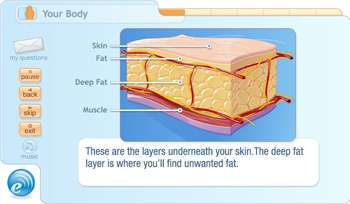Liposuction
Find your care
Our team is made up of experts and leaders in the art and science of plastic surgery. To learn more about our services, call 310-825-5510.
Liposuction is a cosmetic surgery operation that helps sculpt the body by removing fat from specific areas like the abdomen, hips, buttocks, thighs, knees, upper arms, chin, and neck. The fat is removed using a cannula (a hollow tube) and an aspirator (a suction device). Liposuction is not a substitute for dieting and exercise, but it can remove stubborn areas of fat that do not respond to traditional weight loss methods.
Best candidates for liposuction:
The best candidates for liposuction are people of relatively normal weight and with elastic skin, who have pockets of excess fat in certain areas. The patient should be physically healthy, and have realistic expectations. Individuals who have lots of loose skin (for instance, after significant weight loss) may be better candidates for ‘body contouring’ surgeries, such as tummy tucks or body lifts, that remove loose skin as well as excess fat.
Preparing for surgery:
Patient should stop taking medications that can increase bleeding and bruising two weeks prior to surgery, such as aspirin and Advil/Motrin (a list of medications to avoid will be provided at that time surgery is scheduled). Smoking should be avoided for about three weeks before and after surgery, as it can interfere with circulation and healing.

View Interactive Patient Education Liposuction
The surgery:
The time required to perform liposuction varies considerably, depending on the size of the area treated, the amount of fat being removed, the type of anesthesia used and the liposuction techniques which are selected. A small area, such as the chin/neck, may be treated in under 30 minutes, while a more extensive procedure might last several hours. During the procedure, a medicated fluid (termed ‘wetting solution’) is first injected into the treatment areas before the fat is removed. This fluid is a mixture of intravenous salt solution, lidocaine (a local anesthetic), and epinephrine (a drug that constricts blood vessels). This fluid allows for easy removal of fat, reduces blood loss, and assists in pain relief both during and after surgery. Next, a small incision is made, and a hollow tube is inserted into the fat layer under the skin. This tube, or ‘cannula’ is used to vacuum out excess fatty tissue. Several incision sites (‘ports’) may be required for larger treatment areas, in order to ensure a smooth result after surgery. Once the desired contour is obtained, a compressive garment is placed; this helps to minimize bruising and assists in patient comfort.
Recovery:
After surgery, there will be fluid drainage from the incisions; this is entirely normal, and will resolve in a few days. Compression garments are typically worn for two or more weeks after surgery, in order to control swelling and to assist in shaping the body. While pain is usually mild, the patient will experience some discomfort, as well as swelling, bruising, and temporary numbness. These subside with time. Sutures, if used, are removed or dissolve on their own within the first week. Most activities can be resumed within a few days, though your doctor may suggest that you refrain from sporting activities for several weeks.